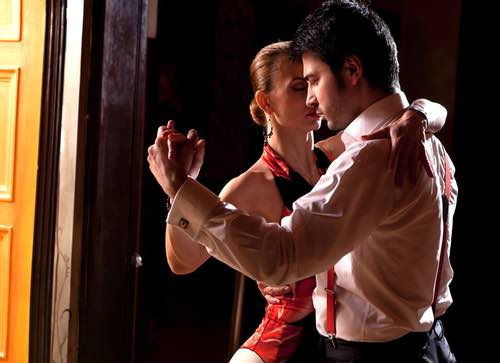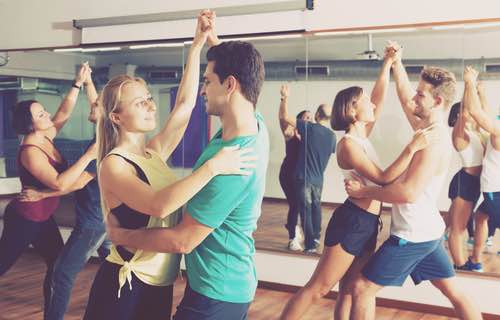Have you ever wanted to learn how to salsa? Is the salsa the right dance for you? Maybe you’ve dreamed about getting salsa lessons, or perhaps you just toyed with the idea of being able to really, truly dance. No matter your reason for wanting to learn more about salsa, we’re here to help! In this post, we’ll go over all you’ve ever wanted to know about salsa and salsa lessons.

What Is The Salsa?
To sum up the salsa dance, it’s best to take a look at the Dances We Teach page on our website. Here, we detail all of the dances we teach and what you can expect from them. The salsa is known to be a sensual dance that is performed with a partner, and it’s the national dance of Puerto Rico. When you dance the salsa, you dance to four beats and use only three steps, making it pretty versatile!
History Of The Salsa
 The version of salsa we dance today, and the type of salsa lessons we teach, is all derived from many years of rhythmical evolution mostly sparked by social, economical, and political change. The style of dance has roots in the Caribbean. When Spain colonized the Caribbean islands in the early 1400s, they also brought their African slaves to the area.
The version of salsa we dance today, and the type of salsa lessons we teach, is all derived from many years of rhythmical evolution mostly sparked by social, economical, and political change. The style of dance has roots in the Caribbean. When Spain colonized the Caribbean islands in the early 1400s, they also brought their African slaves to the area.
Thus, the combination of the Africans’ and the Spaniards’ instruments and dance styles eventually created what we know as salsa. There are Cuban and Puerto Rican influences as well, which allowed this fiery dance style with strong emotion and hip movements to really carve a niche. There are still questions around whether it first started in Cuba or Puerto Rico, because both of these countries dance mainly salsa. The term “salsa” first surfaced in New York around 1970 when Caribbean people brought the dance from the islands, and it’s made hip-shaking history ever since.
Why Is It Called The Salsa?
Known to be a spicy, sexy dance, you might like to know that the word salsa actually is the Spanish word for “sauce,” alluding to hot or spicy flavor. So if you want to take salsa lessons, think about being more saucey with your movements!
Difference Between Cuban and Puerto Rican Salsa Styles
 Because the salsa developed in both of these countries during the early days, each country has its own spice.
Because the salsa developed in both of these countries during the early days, each country has its own spice.
Cuban Style
Also known as Casino-style, the Cuban style of salsa originated in Casinos Deportivos, the dance halls in which the well-off white Cubans would gather to dance during the mid-20th century. The cultural difference in this style of salsa is stressed with the intense interaction between the male and female dancing, with emphasis on sensuality and teasing.
Puerto Rican Style
The Puerto Rican style of salsa is one of the styles that shines come into play. A “shine” is when the male dancer breaks away into a solo and shows off very fast footwork. The footwork is so quick and intricate, it’s said he looks like he’s shining his shoes on his pants, thus the name. Additionally, if you are dancing the Puerto Rican style, that means you are either dancing “on one” or “on two.” The lines are clean and there are plenty of shoulder shimmies throughout the dance.
Where To Salsa Dance
 So, are you taking salsa lessons (or you plan on it), and you want to know where to showcase your skills? Well, if you live in the New Jersey/New York area, we’ve compiled this handy list of nightclubs in Jersey and New York City that host salsa dancing nights.
So, are you taking salsa lessons (or you plan on it), and you want to know where to showcase your skills? Well, if you live in the New Jersey/New York area, we’ve compiled this handy list of nightclubs in Jersey and New York City that host salsa dancing nights.
Which Songs To Salsa To
Because the salsa derived from a mix of African, Spanish, and Latin American influences, it should come as no surprise that many Afro-Latin rhythms driven by the clave (two wooden sticks struck together) is the main type of salsa music. It’s a very percussionist sound that encourages your feet to keep up with the beat.
Ready to start taking salsa lessons? You can sign up for a free first lesson at our New Jersey dance studios here, or check out our sister studios across the country and the world if you aren’t local to NJ.
{{cta(‘a7d6e4e1-a911-4f2b-8b43-6210da6d93fb’)}}
Leave a Reply